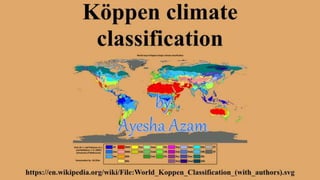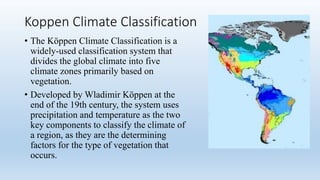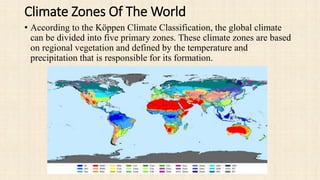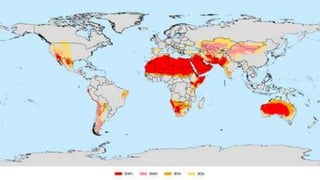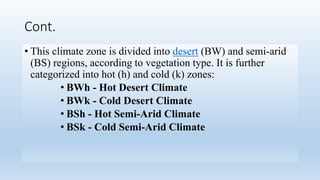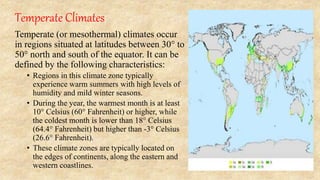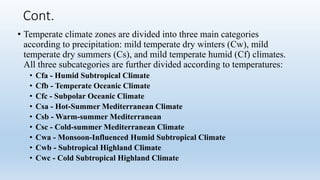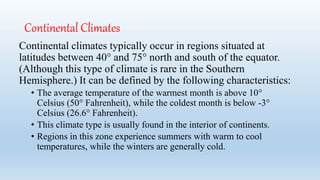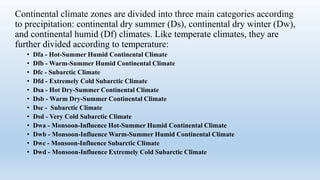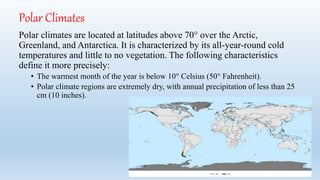The document details the Köppen climate classification system developed by climatologist Wladimir Köppen, which categorizes global climate into five primary zones based on vegetation, temperature, and precipitation. Each climate zone (tropical, dry, temperate, continental, and polar) is defined by specific characteristics and can be further divided into subcategories. The system highlights the correlation between climate and vegetation across various regions worldwide.
